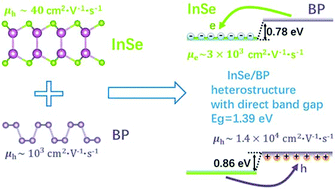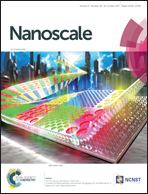Enhancement of hole mobility in InSe monolayer via an InSe and black phosphorus heterostructure
Abstract
To enhance the low hole mobility (∼40 cm2 V−1 s−1) of InSe monolayer, a novel two-dimensional (2D) van der Waals heterostructure made of InSe and black phosphorus (BP) monolayers with high hole mobility (∼103 cm2 V−1 s−1) has been constructed and its structural and electronic properties are investigated using first-principles calculations. We find that the InSe/BP heterostructure exhibits a direct band gap of 1.39 eV and type-II band alignment with electrons (holes) located in the InSe (BP) layer. The band offsets of InSe and BP are 0.78 eV for the conduction band minimum and 0.86 eV for the valence band maximum, respectively. Surprisingly, the hole mobility in the InSe/BP heterostructure exceeds 104 cm2 V−1 s−1, which is one order of magnitude larger than the hole mobility of BP and three orders larger than that of the InSe monolayer. The electron mobility is also increased to 3 × 103 cm2 V−1 s−1. The physical reason has been analyzed deeply, and a universal method is proposed to improve the carrier mobility of 2D materials by forming heterostructures with them and other 2D materials with complementary properties. The InSe/BP heterostructure can thus be widely used in nanoscale InSe-based field-effect transistors, photodetectors and photovoltaic devices due to its type-II band alignment and high carrier mobility.

- This article is part of the themed collection: Editor’s Choice: van der Waals heterostructures


 Please wait while we load your content...
Please wait while we load your content...